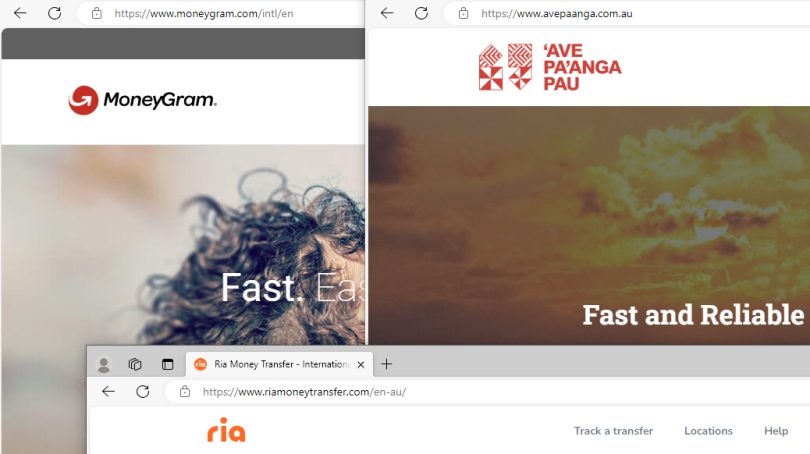The first blog in this series highlighted the large gap between low- and high-cost Remittance Service Providers (RSPs) in Tonga and other Pacific countries. The second showed that most people tend to use higher-cost options, thus keeping average realized remittance costs high. In this final blog in the series, we emphasise the opportunities for public policy by calculating the gains from switching to the lowest-cost RSPs, and highlight the remaining knowledge gap.
How much would Tongan households and the economy gain if people were to make a concerted shift to the lowest-cost RSPs? Here, we calculate the gain that could be made by switching from the two popular RSPs, Moneygram and Western Union, to the lowest-cost RSPs — Ria, in the Australia-Tonga corridor, and Ave Pa’anga Pau in the New Zealand-Tonga corridor.
Our simple simulation exercise consists of three steps.
First, we derive the gain per transaction of 200 dollars (AUD and NZD, respectively) by calculating the difference between the cost of the lowest-cost RSP and the two popular RSPs in both local currency terms and as a percentage of remittance costs.
Second, we estimate the average of remittances sent in six months by Tongan temporary migrants in Australia and New Zealand from the Pacific Labour Mobility Survey’s (PLMS) worker survey component. The average remittances in six months are AUD 8,116.50 (12695.7 Pa’anga) in Australia and NZD 9,265.30 (13410.2 Pa’anga) in New Zealand.
Third, we calculate the aggregate gain to the Tongan economy by multiplying the gain per household by the number of households using Moneygram and Western Union, based on PLMS household survey and migration statistics from the Australian and New Zealand governments.
Table 1 shows the simulation results based on data from Send Money Pacific. In the Australia-Tonga corridor, switching to Ria would enable the Tongan economy to receive 1,103,809 Pa’anga more in a six-month period, amounting to 2.4% of the remittances sent by Tongan PALM workers. In the New Zealand-Tonga corridor, switching to Ave Pa’anga Pau would save 424,596 Pa’anga, or 2.3% of the remittances sent by RSE workers.

In total, the approximate gain to the Tongan economy (as proxied by that flowing to households instead of RSPs, which are usually not local companies) would equal 1,528,405 Pa’anga, which is 2.3% of the estimated total remittances sent by temporary migrants in Australia and New Zealand. Recall that remittances are today approximately equal to half of Tonga’s GDP, making these gains not at all trivial. The same analysis based on data from Saver Pacific shows a 0.1 percentage point higher gain, but the results are qualitatively similar (Table 2).

The underutilization of low-cost remittance services is not just an issue for Tonga but for most Pacific countries. Our simulation suggests quantitatively large gains can be made by switching to lower-cost RSPs. But what currently prevents people from doing so?
Barriers to switching typically relate to a lack of awareness of low-cost options, preference for the services provided by the higher-cost provider even when users are aware of low-cost options, or a lack of capability to use the lower-cost options, especially if they are digital. Policy interventions aimed at building awareness of and trust in low-cost options would clearly be worth exploring. However, first it will be important to improve our understanding, including through rigorous testing, of how each of these barriers actually limits the uptake of low-cost RSPs in Tonga and other Pacific countries.
This is the third blog in a three-part series.
Disclosure
This research was supported by the Pacific Research Program, with funding from the Department of Foreign Affairs and Trade. The views represent those of the authors only.


Thank you for your blogs.